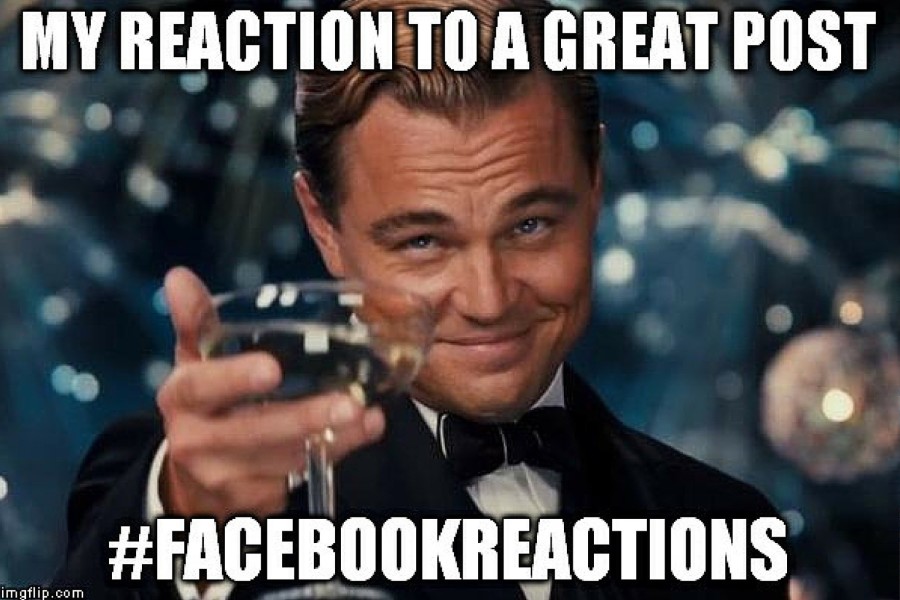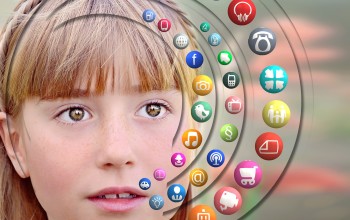Before analyzing the significance of Facebook reactions for marketers, let’s stop by to analyze the significance of non-verbal elements in communication.
In in-person communication, tonality and body language that includes facial expression, eye-contact, posture and gesture provide critical support for conveying your message while also negotiating the relationship.
The same set and sequence of words can transmit different meaning and message depending on the tone of the utterance or the body language accompanying the utterance.
Even a simple utterance such as, “Pass the salt” may be a construed as a command, a request, a jibe, a joke, etc. based on the tone and the body language of the speaker.
In fact, often a lot of meaning is decoded from non-verbal signals than spoken words. Or from what was not said than what was said.
Such non-verbal cues were absent in written communication, ever since written communication was invented. But that changed with the invention of emojis – the facial expression of written communication, if not posture, gesture or tonality.
Yes, emojis fill that gap and they are important in written communication in the age of messaging apps and online chats. They can help build relation or prevent misunderstanding, especially when you are trying to communicate something potentially tricky.
The new #FacebookReactions are basically the stages of a failed relationship pic.twitter.com/xjQqSN7Ecm
— Eugene Lee Yang (@EugeneLeeYang) February 25, 2016
Facebook experiments, revamps or adds new features once in a way and that results in a world-wide buzz. It happened when they introduced the Timeline or when they launched the autoplay video feature. Now with the Facebook reactions, it’s no wonder that there are mixed reactions and discussions online (specially on Twitter) as well as offline.
Written by @amandabaramki https://t.co/q8uObTqTj9 #FacebookReactions pic.twitter.com/F2LSl2VfCk
— someecards (@someecards) February 26, 2016
How relevant are Facebook reactions for marketers?
This will depend on how marketers capitalize on it. For example, Tastemade vidoes tasted a phenomenal amount of success with the Facebook autoplay video feature and continue to be successful.
At least we have #FacebookReactions now! #TechHumor #Facebook #Like pic.twitter.com/aFwmjvA0Id
— Milton Security Grp (@MiltonSecurity) February 25, 2016
Big data as well as small data will get bigger with the granular level break-up of Facebook reactions for marketers. But should marketers get busy analyzing them to understand user sentiment? I wouldn’t do that just yet.
Haters Gonna Hate #FacebookReactions pic.twitter.com/bKr3d810eq
— La Secte (@agencelasecte) February 25, 2016
In social media, engagement is usually measured in terms of the total number of interactions – [impressions + likes + comments + shares]. Another key metrics is the impression to engagement ratio – i.e., the ratio of the total number of impressions to the total number of actions taken on a post, be it likes, comments, or shares. So it doesn’t matter much what the Facebook reaction is, as long as there is some reaction.
Loving the reports you get in Facebook about who’s used which ‘reaction’! #Facebookreactions pic.twitter.com/3j080nsPdw
— Julia BrambleBuzz (@JuliaBramble) February 25, 2016
With that said, I do think that Facebook interactions are fun and can encourage more users to interact with a post. When they react to a post, the post will get more reach on the news-feeds of their friends. Also if a user puts in extra time and effort to pull up the reaction options and choose a specific emoji to communicate their feelings about a post, as opposed to just clicking the plain like button, then it may be a signal of better post quality. But not necessarily, because users have only so much time to engage with one post. So a plain like does not necessarily mean less love. It may also mean less time to communicate true love.
Why, even in real life we don’t have the time to communicate our feelings accurately or precisely.
I’d continue worrying more, as I do, if a post has lesser reach or fewer link clicks than I’d like it, than fewer likes or comments. Facebook reactions, like other reactions, can also be of the knee-jerk variety. But link clicks that result in visits to website and graduate to higher levels of love should matter more to marketers. Higher levels of love as in more page-views from the visit, return visits, or other sales/marketing relevant actions such as content downloads, inquiries, etc.
The bottom line – those cute reactions do matter, but actions matter more than Facebook reactions for marketers.




